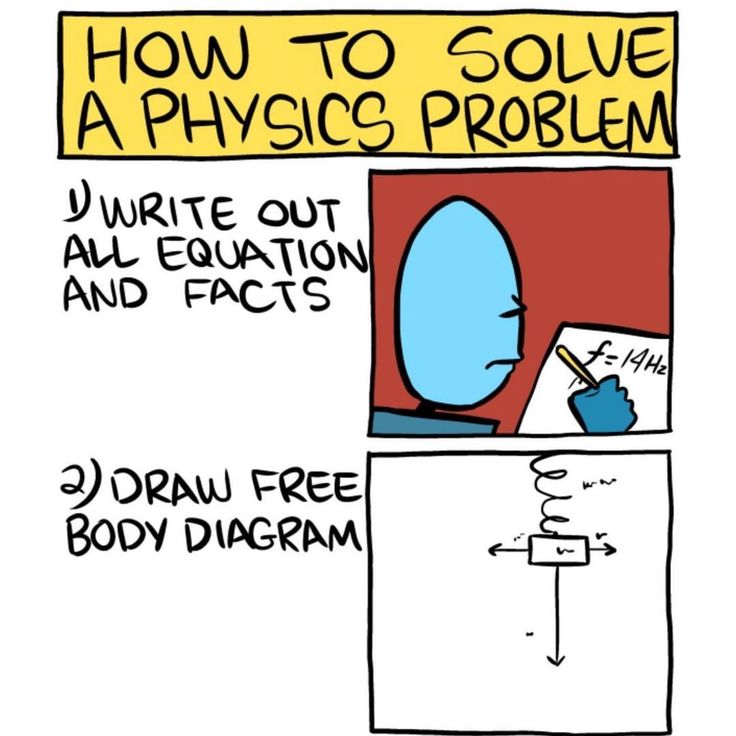
how to solve a physics problem
An introduction to how to solve a physics problem
Name: Own Teacher
Email: info@ownteacher.com
Created At: 21-10-2023
how to solve a physics problem…..???
To solve a physics problem, identify the key concepts, apply relevant equations, analyze data, and ensure units are consistent for accurate solutions.
There are a few ways to solve physics problems faster. Here are a few tips:
Understand the problem. Before you start solving a problem, make sure you understand what is being asked of you. Read the problem carefully and make sure you understand the concepts involved.
Break the problem down. Once you understand the problem, break it down into smaller parts. This will make it easier to solve.
Use a systematic approach. When solving physics problems, it's important to use a systematic approach. This could include using a specific method or formula, or following a set of steps.
Practice, practice, practice. The more problems you solve, the better you will become at solving them quickly.
Get help when needed. If you're having trouble with a problem, don't be afraid to ask for help. Talk to your teacher, a tutor, or a study group.
Get a good night's sleep. Being well rested can help you think more clearly and solve problems more quickly.
Remember, solving physics problems takes time and practice. Keep working at it and you will get better.
example:-
Question: A uniform steel bar swings from a pivot at one end with a period of 1.2 seconds. How long is the bar?
This problem deals with PHYSICAL PENDULUM and calculating its period. We will explain the solution to this problem right from scratch. We will not use any secondary formulas, and all the steps will be based only on the most fundamental equations.
Also, we will explain how to approach and solve a problem, where to start from, and what strategy to adopt to solve it most efficiently and logically.
It is explained in such a way that anyone knowing even fundamental physics can understand it easily.
We will try not to solve the problem step by step but also provide helpful insight into what goes on while solving a problem. It will help us solve other problems in your physics homework as well.
Approaching the problem
The bar given is uniform. By this, we mean the dimensions are uniform, and the density is the same everywhere in the bar.
This situation is entirely different from a simple pendulum where the mass “m” is concentrated in the bob at a distance “l” from the pivot point. Here the whole mass “m” is distributed uniformly throughout the length of the bar pendulum.
The FBD of the Physical pendulum is as below:
Building our strategy
We know from our experience that when we displace a uniform rod pivoted at one end slightly by a small angle “θ,” it oscillates about the pivot. So, our analysis should start from the point where the uniform bar gets displaced from its equilibrium position or the vertical position by a small angle “θ.” The bar will try to come back to its original position. When it comes back to its equilibrium position (vertical), the bar gets kinetic energy due to loss in gravitational potential energy. This momentum does not let the rod settle and instead takes it away again from the vertical position. This cycle continues till it loses all its energy and becomes upright again.
The Physics and Math with explanations
We will assume the bar’s mass as “m” and its length as “l.”
Since the bar is uniform, its center of mass must be at its geometrical center; for a linear rod, the center of mass is at a distance of “l/2” from any end.
The component of the weight W=mg which is normal to the rod, is “mg*sinθ.”
It acts at “l/2” from the pivot point, so the moment of this restoring torque about the pivot point is
T= (l/2) *mg*sinθ and for small angles sinθ= θ this becomes T= (l/2) mgθ
Moment of inertia about the pivot is
I=1/3*ml^2
The resulting angular acceleration α is:
α=T/I= (l/2)*mg*θ/(1/3*ml^2)
Which is α= 3gθ/2l
The SHM criteria is α= w^2*θ
It satisfies the SHM criteria with angular velocity w= sqrt(3g/2l)
Now the period is T=2*pi/w
So, T=2pi*sqrt(2l/3g)
It completes our derivation.
In the given problem, the period is 1.2 seconds.
Plug this in, and we will get
1.2=2pi*sqrt(2l/3*9.81)
Solving this, we will get l= 0.537 m
Finally, it completes our explanation.
Comment List
Leave a Comment.



